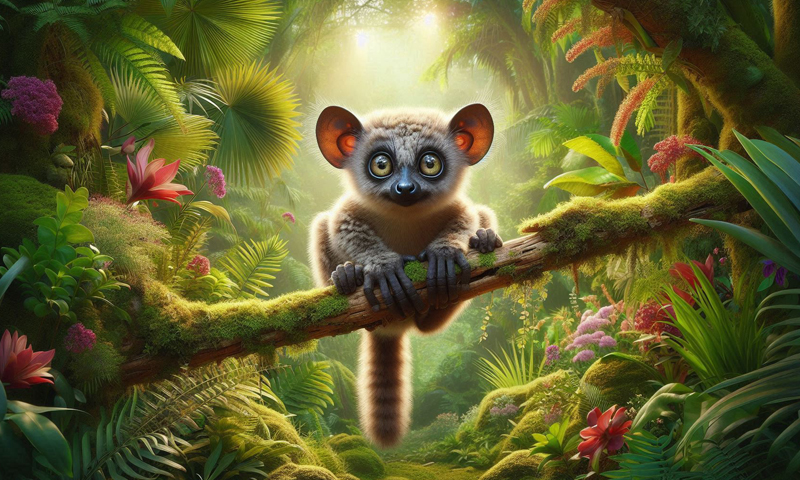Deep in the dense rainforests of Madagascar, under the cover of night, a strange creature emerges. With its eerie glowing eyes, oversized ears, and long, skeletal fingers, the aye-aye (Daubentonia madagascariensis) looks like something out of a myth. But this nocturnal primate is not just real—it’s one of the most fascinating and misunderstood animals on the planet.
A Primate Unlike Any Other
The aye-aye is a type of lemur, but it doesn’t look or act like any other member of its family. It has a bushy tail longer than its body, rodent-like teeth that grow continuously, and an incredibly thin, elongated middle finger—which it uses in a way that’s as bizarre as it looks.
This unique combination of features led scientists to mistakenly classify the aye-aye as a rodent when it was first discovered. Today, it holds the title of the world’s largest nocturnal primate, but its strange adaptations make it one of nature’s true oddities.
The Aye-Aye’s Superpower: Echolocation Hunting
What makes the aye-aye truly special is its feeding technique, which is unlike any other primate. It uses percussive foraging, tapping on tree trunks with its extra-long middle finger up to 8 times per second. This helps it detect hollow spaces where insect larvae hide, similar to how a woodpecker searches for food.
Once it finds a cavity, the aye-aye chews through the bark using its strong, ever-growing teeth. Then, it inserts its thin, flexible middle finger into the hole to extract the hidden prey. This method is so rare that the aye-aye is the only primate known to use echolocation for hunting.
Where Do Aye-Ayes Live?
Aye-ayes are found only in Madagascar, an island famous for its unique wildlife. They inhabit rainforests, dry forests, and even coastal mangroves, though deforestation has made their habitat increasingly fragmented. Since they are nocturnal and spend most of their time high in trees, sightings in the wild are rare.
The Curse of Superstition
Despite its fascinating adaptations, the aye-aye has a dark reputation in local Malagasy folklore. Many people believe it is a harbinger of death, and some myths claim that if an aye-aye points its long finger at you, it foretells misfortune. Because of these superstitions, aye-ayes are often killed on sight, contributing to their population decline.
A Species in Danger
Due to hunting and habitat destruction, aye-ayes are listed as Endangered by the IUCN. Madagascar’s forests are being rapidly cleared for agriculture, pushing these already elusive creatures into smaller and more isolated areas. Conservation efforts, including protected reserves and captive breeding programs, are crucial to ensuring their survival.
Why Aye-Ayes Matter
As an important part of Madagascar’s ecosystem, aye-ayes help control insect populations and contribute to forest health. Their role in nature is irreplaceable, and understanding them better can help break the cycle of superstition and fear that threatens their survival.
The aye-aye may not be conventionally cute, but it is one of the most extraordinary primates on Earth. From its bizarre hunting method to its misunderstood reputation, it is a living testament to nature’s creativity. The next time you hear about the aye-aye, think of it not as an omen of bad luck, but as a symbol of resilience and adaptation in Madagascar’s disappearing forests.











